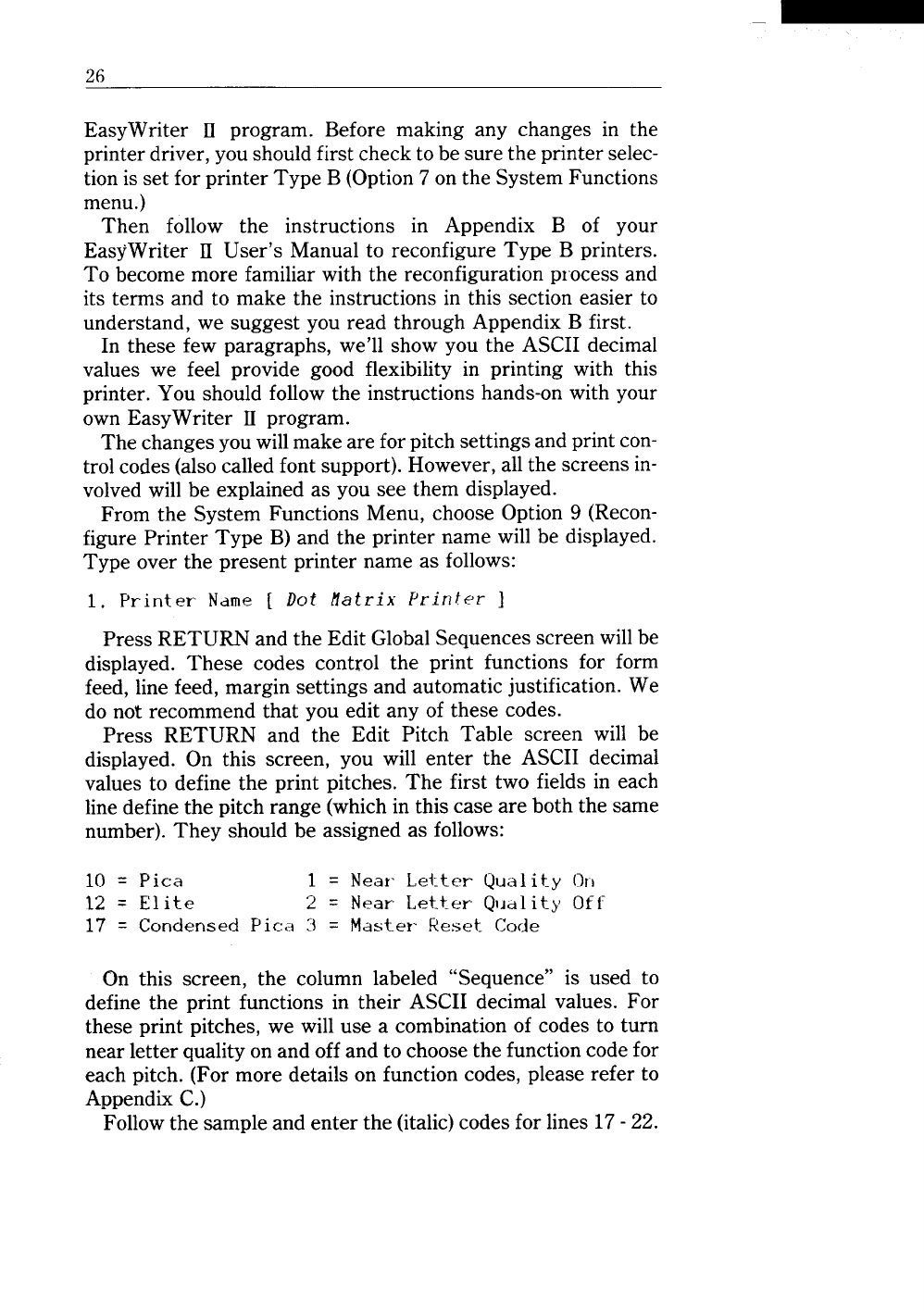
EasyWriter II program. Before making any changes in the
printer driver, you should first check to be sure the printer selec-
tion is set for printer Type B (Option 7 on the System Functions
menu.)
Then follow the instructions in Appendix B of your
EasyWriter II User’s Manual to reconfigure Type B printers.
To become more familiar with the reconfiguration process and
its terms and to make the instructions in this section easier to
understand, we suggest you read through Appendix B first.
In these few paragraphs, we’ll show you the ASCII decimal
values we feel provide good flexibility in printing with this
printer. You should follow the instructions hands-on with your
own EasyWriter II program.
The changes you willmake are for pitch settings and print con-
trol codes (also called font support). However, all the screens in-
volved will be explained as you see them displayed.
From the System Functions Menu, choose Option 9 (Recon-
figure Printer Type B) and the printer name will be displayed.
Type over the present printer name as follows:
1. Printer Name [ Dot flatrix ~rinter ]
Press RETURN and the Edit Global Sequences screen will be
displayed. These codes control the print functions for form
feed, line feed, margin settings and automatic justification. We
do not recommend that you edit any of these codes.
Press RETURN and the Edit Pitch Table screen will be
displayed. On this screen, you will enter the ASCII decimal
values to define the print pitches. The first two fields in each
line define the pitch range (which in this case are both the same
number). They should be assigned as follows:
10 = Pica 1 = Near Letter Qua 1ity On
12 = Elite
~ = Near I,et.~~r Ql~~1i ty Off
17 = ccm~ensed P ic:a 3 = Master .Resef (lxje
On this screen, the column labeled “Sequence” is used to
define the print functions in their ASCII decimal values. For
these print pitches, we will use a combination of codes to turn
near letter quality on and off and to choose the function code for
each pitch. (For more details on function codes, please refer to
Appendix C.)
Follow the sample and enter the (italic) codes for lines 17-22.


















